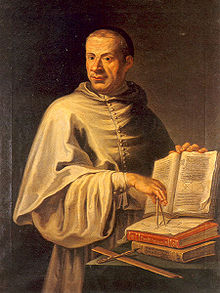Luigi Guido Grandi

Luigi Guido Grandi (October 1, 1671 – July 4, 1742) was an Italian priest, philosopher, mathematician, andengineer born in Cremona. He was Jesuit-educated and became a member of the Camaldolese order. He became a professor of philosophy at the Camaldolese monastery in Florence in 1700 and a professor of mathematics in 1714.
In mathematics Grandi is best known for studying the rose curve, a curve which has the shape of a petalled flower, and for Grandi's series. He named the rose curve rhodonea. He also contributed to Note on the Treatise of Galileo Concerning Natural Motion in the first Florentine edition of Galileo Galilei's works and helped introduce Gottfried Leibniz's ideas on calculus to Italy. He also worked as an engineer, being superintendent of water at Tuscany, and in that capacity he was involved in the drainage of the Chiana Valley. In 1709 he visited England where he was elected a Fellow of the Royal Society.
External links
- O'Connor, John J.; Robertson, Edmund F., "Luigi Guido Grandi", MacTutor History of Mathematics Archive, University of St Andrews
- Galileo Project: Guido Grandi
